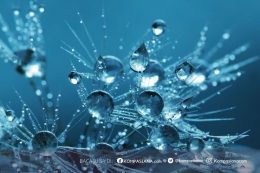ABSTRACT
The water quality of the rivers in Gresik, specifically in Bengawan Solo river in Bungah-Ujung Pangkah area and the downstream of Brantas River in the Wringinanom-Driyorejo Region, is polluted as perceived from the total dissolved solids that reaches 5000 ppm. Meanwhile, the river water contaminated with microplastics in Bengawan Solo reaches 55.2/100 L and the downstream of Brantas River reaches 18.5/100 L3. The garbage does not only accumulate in rivers, but also on land. In Sekapuk Village, Ujung Pangkah Subdistrict, Gresik, there is a former limestone mine.
Since the mining was completed, it ended up being a landfill from 2003 through 2017. The current study employs a qualitative research method. The data were collected from interviews, observation, and documentation. The objectives of this study are: 1) To determine the components of tourism and participatory planning in Setigi tourist attraction, 2) To determine the community development and empowerment in Setigi tourist attraction, and 3) to determine the supporting and inhibiting factors in managing Setigi tourist attraction.
The results of this study are as follows: 1) Setigi tourist attraction's components include parking areas, toilets, prayer rooms, gazebos, photo spots, culinary areas, ATV cars, and others. The planning of this tourist attraction came from an idea of the village head to make the village into a tourist attraction. As a result, a regular meeting is held on the 1st of every month which is attended by members of BUMDES, PEMDES, other village institutions such as local community units (RT & RW) and other community members, 2) The community development is carried out by providing opportunities to establish stalls for women in family welfare program (PKK) groups and each local community unit (RT /RW) in Sekapuk Village, 3) The supporting factors are the ability and the willingness to establish Setigi tourist attraction. Meanwhile, the inhibiting factor is the limited funds in the tourist attraction development, but a joint saving program was planned by the village head. Keywords: Community Based Tourism Development, Waste Management, Setigi Tourist Attraction
PRELIMINARY
Garbage or waste in English is a material that discarded or discarded from human activities. Garbage is a form from human activity. Simply put, trash is divided into two, namely organic and inorganic. Organic is wet waste that comes from from living things, such as features and kitchen waste. While trash inorganic waste is non-biodegradable waste, such as cans, rubber, metal, plastic which is dry waste.1In the 17th century, the Dutch population still threw out their garbage everywhere, causing many diseases. Then the local government provide garbage disposal. Then in the 19th century, trashstill being gathered in certain places, but no longer the people who dispose of, but officers appointed by the government who take from people's homes. Starting from the 20th century, garbage is not piled up, but burnt. The condition of waste in the Netherlands at that time was roughly the same as Indonesia today. Finally in the 21st century garbage is still burned but with waste burning technology so that toxic gases are harmless public health, it can actually benefit the community because it becomes power plant.2 Such is the condition of waste in the Netherlands.Meanwhile, in Indonesia, waste is still a problem that doesn't go away finished. The Ministry of Environment and Forestry stated that waste from 289 districts in Indonesia in 2020 reached 36,725,828.83 tons per year.Of the 3 million tons, only 53.79% were managed. While the remaining 46.21% not managed properly.3 From the data we can understand, the waste problem especially in Indonesia is still an unfinished homework.So we need the contribution of scientists, government and society to solve it.
In Jember Regency, Ziadatur Rizkiyah, Head of TCC (Trash Control Community) claimed to have conducted research on the quality of river water in North and South Gresik areas. The research location in North Gresik is located at Bengawan Solo in the Bungah-Ujung Pangkah area, while Gresik Selatan is in Kali Lower Brantas Wringinanom-Driyorejo Region. The results of the study show the quality of the water in the river is polluted due to the high total dissolved solid up to 5000 ppm. Meanwhile, river water contaminated with microplastics is Bengawan Solo 55.2/ 100 L and Brantas Hilir River 18.5/ 100 L 3.4 The following are the condition of the garbage in the river around Gresik.
It turns out that pollution due to garbage is not only in rivers, but also in mainland. In Sekapuk Village, Ujung Pangkah District, Gresik Regency, there are former limestone quarry. Since mining was no longer carried out, finally the location It has been used as a garbage dump by local residents since 2003 until 2017. This makes the environment polluted. According to the narrative Abdul Halim, Sekapuk Village Head, the thickness of the waste reached 12 to 14 meters. Tall and huge. Especially when the rainy season arrives, trash it will emit a foul smell From former mines to garbage that has accumulated for years, it can be transformed into an environmentally friendly tourist spot can improve the economy of the community. Even this village has won 1st place in brilliant village in Indonesia in the BRIncubator Incubation Program Goes to Brilliant Village.6 Based on the problems that have been described previously, the researcher interested in raising the title "community-based tourism development for improve the economy of the people of Sekapuk Village, Ujung Pangkah District Gresik Regency" in this study.
RESEARCH METHODS
This research uses qualitative research methods. Technique data collection by interview, observation, and documentation. To to get accurate data, this research also uses the method source triangulation. The discussion in this study includes the type of research descriptive. The location of this research is on Jl. Raya Deandles No. 33-88 Sekapuk Desa Village Ujung Pangkah District, Gresik Regency.
Discussion Setigi Tourism Profile







